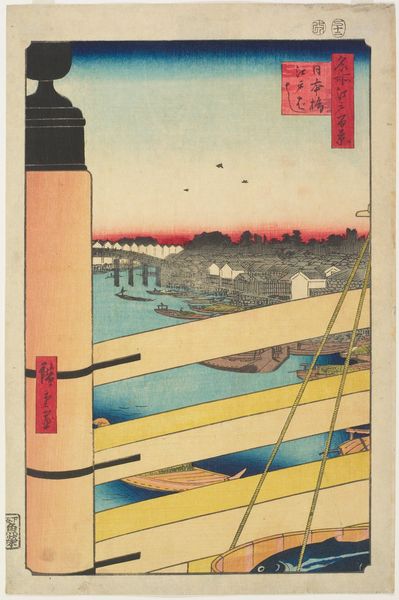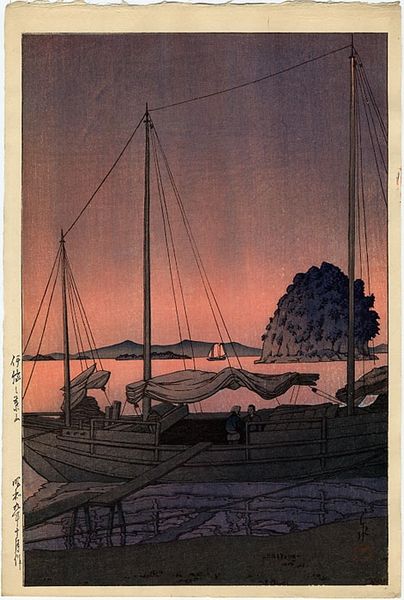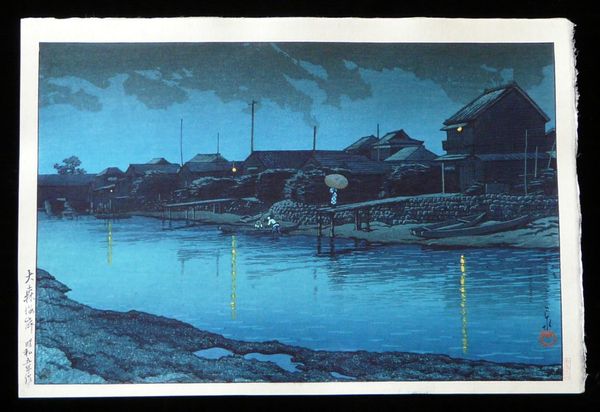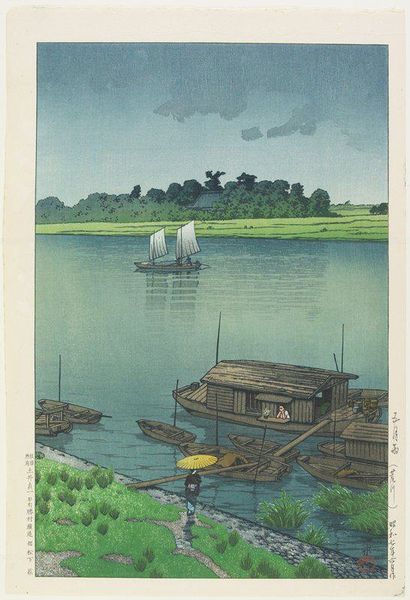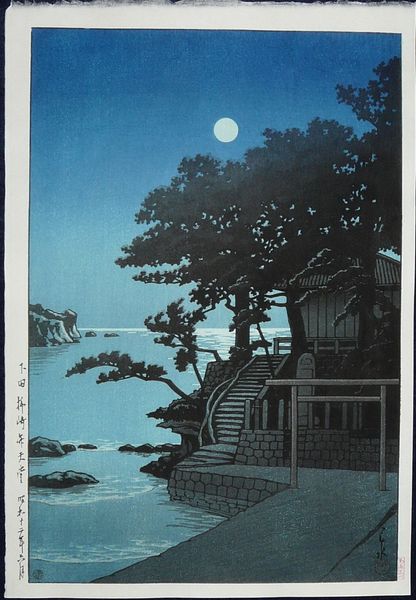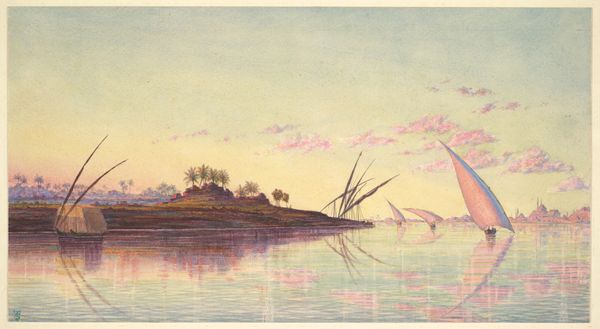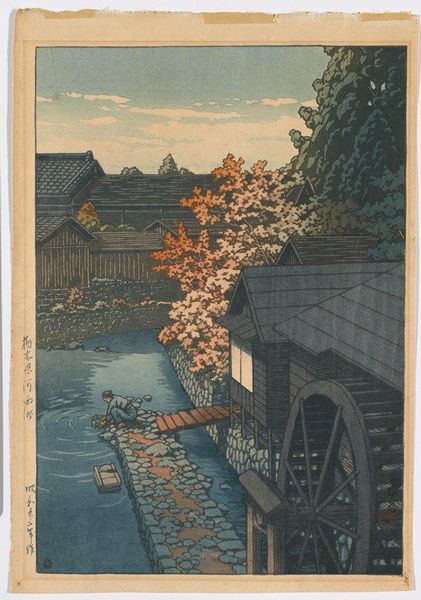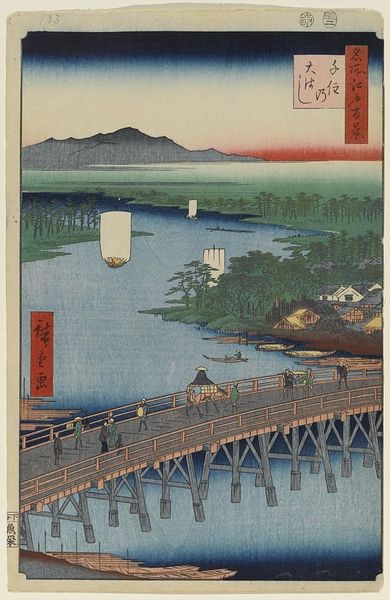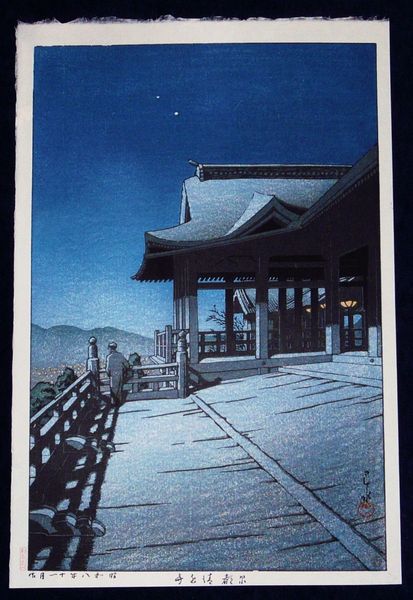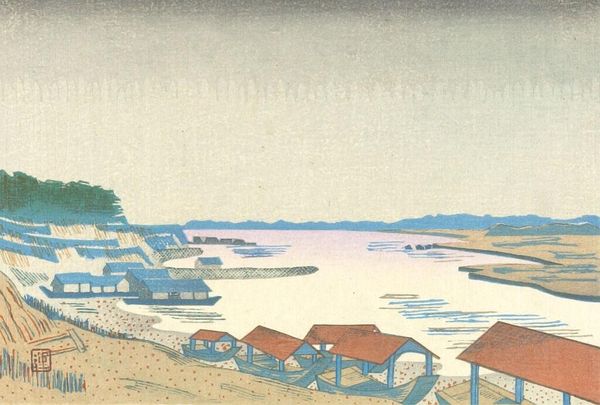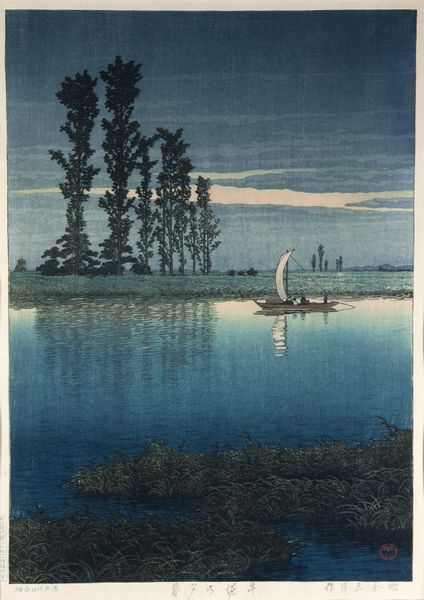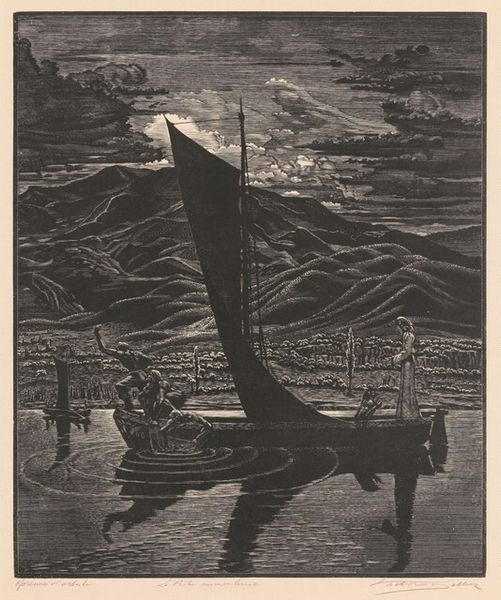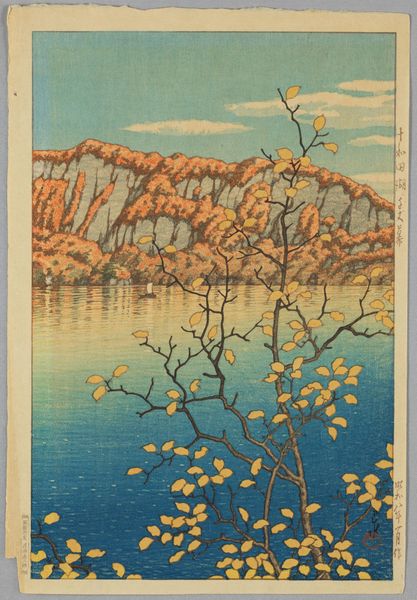
Copyright: Public domain Japan
Curator: The sunset seems to imbue this whole scene with such a fleeting, delicate mood. Editor: I agree, the coloring is gorgeous. Let’s talk a bit about this piece. What we have here is "Tsuchizaki, Akita" created in 1928 by Hasui Kawase. He was an artist deeply rooted in the shin-hanga movement, and this is a woodblock print, part of his series documenting various Japanese landscapes. Curator: Ah, shin-hanga, that "new print" movement that revitalized ukiyo-e traditions while also integrating Western art aesthetics, like impressionism, and perspectives! The choice of depicting Tsuchizaki during twilight resonates with that longing and those in-between feelings associated with transient spaces and times. I feel a kind of deep, serene melancholy when I see this. Editor: Exactly! The almost graphic, two-dimensionality of the boats and town contrasting with the atmospheric depth of the sky makes it striking. Notice the detail in the old wooden boat's construction and its positioning right up against the water—almost in conversation with it, reflecting the hard work, utility, and dependence of this village on fishing and trade. Curator: Yes, there's an inherent socio-economic element at play that we have to recognize when interpreting Kawase’s landscapes, particularly since the rapid modernization happening during his time also included a disappearance of traditions and rural life. This becomes a symbolic eulogy about cultural erasure as well. Editor: You bring up such a critical point—Kawase wasn't just documenting pretty landscapes. This connects deeply with ongoing issues about cultural preservation and valorizing often-overlooked labor. The tools that make living in this environment possible have equal weight to romantic interpretations. The method he used to make his works also needs recognizing. The labour of producing woodblock prints is quite astonishing when we compare it to industrial methods and its cultural position as a ‘low art form’. Curator: I'm so glad we paused here. It's crucial we acknowledge those historical contexts that intertwine to form our understanding of art—the impact of modernization on landscape aesthetics and communities alike. Editor: Indeed, an artwork is so much more than just a picture. Thinking about how people made art objects teaches us so much about broader histories of labour.
Comments
No comments
Be the first to comment and join the conversation on the ultimate creative platform.
